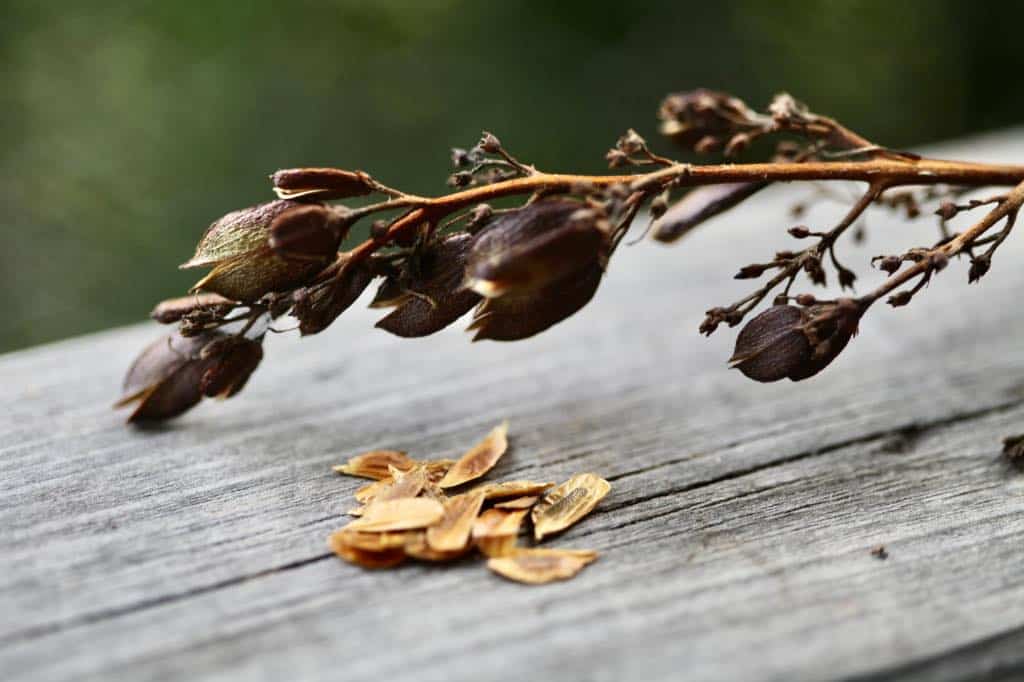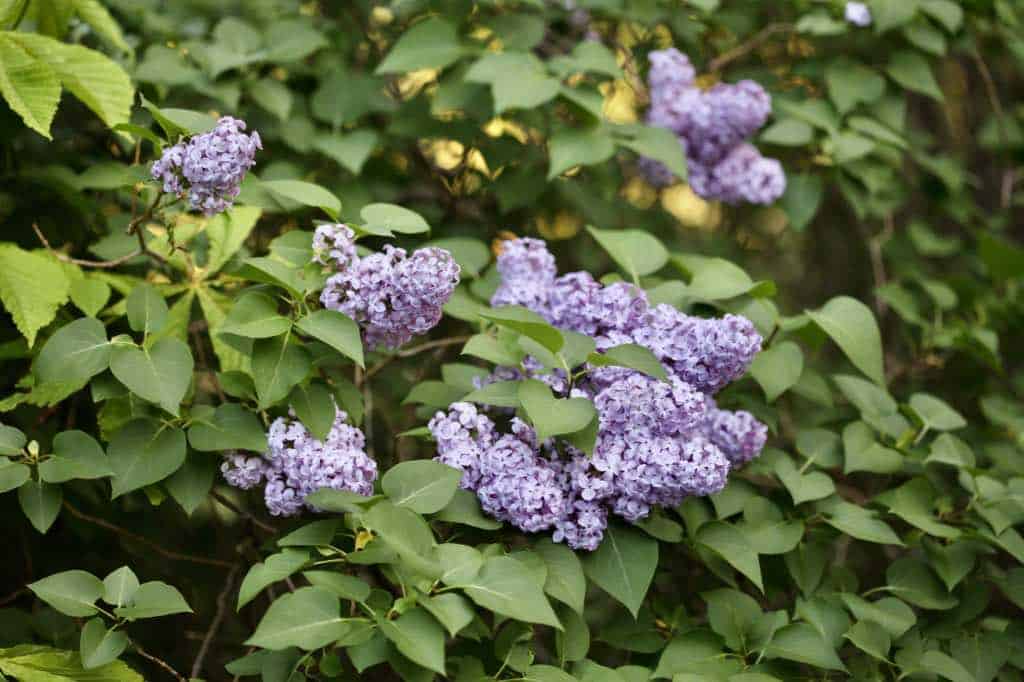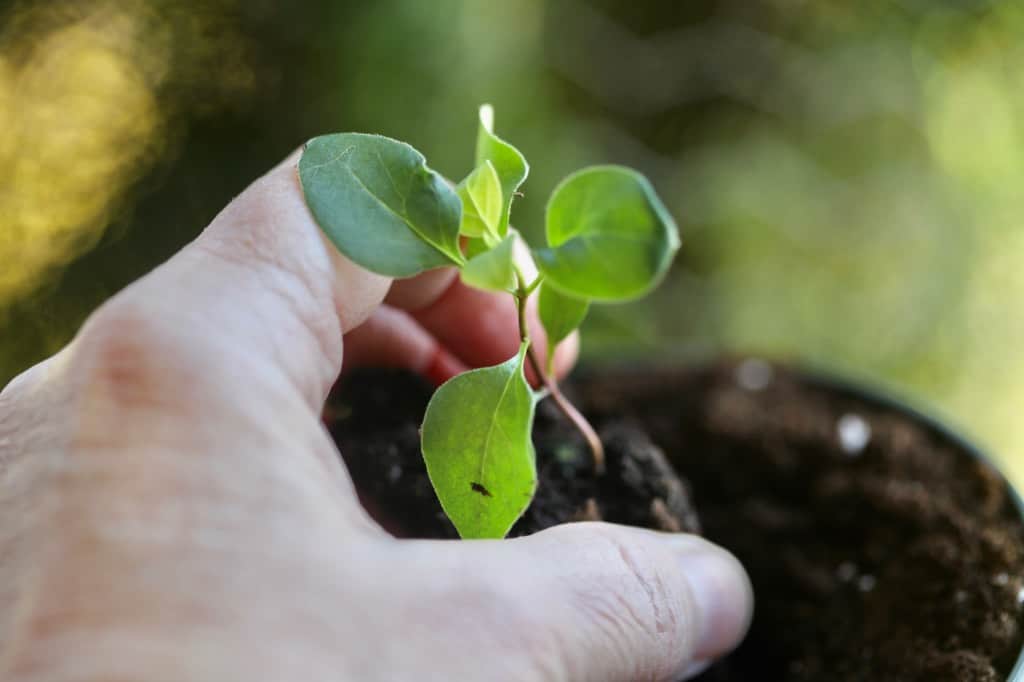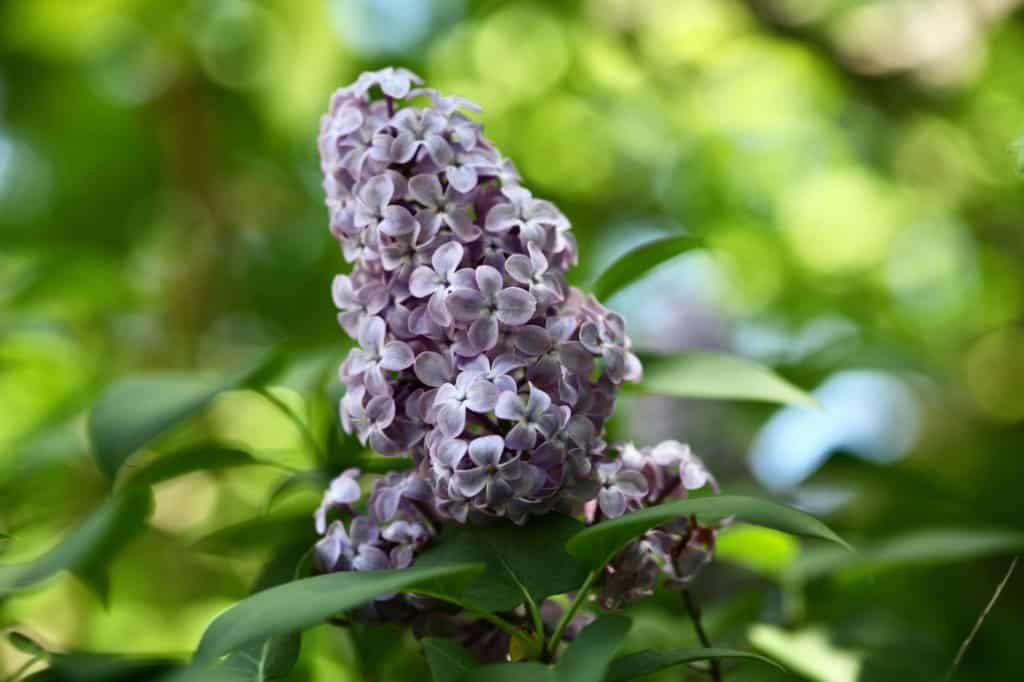Lilacs are ornamental shrubs which are known for their beauty and fragrance. The scent of lilac flowers is intoxicating, and their fragrance will fill the air with a sweet perfume, when the plants are in full bloom. Learn how to grow lilacs, and grow these wonderful plants in your garden.

Lilacs are beloved for their fragrant flowers, and easy to grow nature, making these plants a popular choice for home gardeners, and landscapers alike.
The flowers are colorful, and romantic, and visually delicate in appearance. Yet these are truly tough plants, which are very easy to grow.
Lilacs are considered a type of shrub or small tree which bloom in late spring and early summer. Often grown together en masse, or in hedges and borders, lilacs add a touch of beauty to any landscape.
The plants are also grown as specimen plants, because even a single bush will make an impact in the outdoor space.
Whether you are looking to plant just a few lilacs to brighten up the garden, or create a stunning lilac hedge, these shrubs are able to tolerate a wide range of growing conditions and climates.
In this article we'll explore the basics of how to grow lilacs, including choosing the right location and planting method, different methods of propagating, and providing proper care and maintenance.
Growing lilacs can be a fun experience for gardeners of all skill levels. Whether you are a seasoned gardener or a beginner gardener, read on to learn all you need to know about growing and caring for lilacs.

About Lilacs
Lilacs are deciduous shrubs or small trees which produce fragrant clusters of beautiful flowers in late spring.
Lilac plants belong to the Family Oleaceae and to the Genus Syringa. Syringa vulgaris is the species name of the plant.
The common names for Syringa vulgaris are lilac, and common lilac. Lilacs are native to the Balkan Peninsula in South Eastern Europe.

Lilac Varieties
There have been many cultivars of lilacs hybridized over time. Some have been naturally hybridized as well, such as the Persian lilac, or S.x persica, which is a smaller plant.
Some different varieties of lilac include:
- Common lilac, Syringa vulgaris: This lilac is the most well known lilac variety, and is highly prized for it's sweet fragrance and purple blooms.
- Dwarf Korean Lilac, Syringa meyeri Palibin: This lilac is a more compact lilac bush known for it's lavender pink flowers and fragrant blooms.
- Persian Lilac, Syringa x persica: This lilac produces pale purple fragrant blooms on a smaller bush.
- Japanese Tree Lilac, Syringa reticulata: This plant is a tree-like lilac which can grow up to 30 feet in height, producing creamy white blooms in mid summer.
- French Lilacs, Syringa x hyacinthiflora: This lilac is a hybrid which produces highly fragrant blooms, in different shades of pink, purple, and white.
- Miss Kim Lilac, Syringa pubescens subs. patula: This lilac is a compact and slow growing highly fragrant lilac cultivar which produces lavender-blue flowers.
The shrubs can vary in size, depending on the cultivar, however the plants usually grow between 5 to 25 feet in height.
The plants can spread and grow by producing new suckers and shoots around the base of the plant, which eventually will form a small cluster or thicket of plants.

Historical Significance
Lilac plants have historical significance, and have been grown for centuries. The flowers are symbols of love and romance, and have been represented in art, literature, and even poetry throughout the ages.
Lilacs have one of the earliest bloom times, and for many, lilacs are a symbol of spring and love. The plants are also a symbol of new beginnings.
The flowers are often used as cut flowers in special spring celebrations, to celebrate new beginnings.
In our own garden, the first lilac blooms signal the start of gardening season, and the flowers are therefore highly anticipated.
The blooms don't last long on the plant however, so are admired and enjoyed throughout their entire short blooming cycle.

Lilac Flowers
Lilacs produce sweet fragrant spring flowers in late May and June, depending on the growing zone.
I absolutely love to photograph lilac flowers when they are in bloom. It's very hard to get a bad shot of these beauties, as they are just so photogenic.
Lilac flowers are arranged on terminal panicles, in dense clusters. Each multi-branched flower cluster can grow up to 7 inches in length.
If you look closely at each of the smaller flowers which make up the larger cluster, you will find 4 lobed flowers with a tubular base.

Some cultivars have double blooms, while other have singles.
Lilac flowers come in a variety of different colors. Lilac flower color is most often found in shades of purple and mauve, however can also be found in pale blue, pink and white flowers, and even pale yellow flowers.
Sometimes the flowers are also found in a bi-colored pattern, with several colors appearing on one flowering cluster together.
The unique coloring of each lilac bush is dependent on the cultivar or variety of that particular lilac plant.
Interestingly the color "lilac" is named after the simple pale purple color of common lilac blooms.
The fragrance of lilac flowers is a combination of both floral and sweet notes. The scent is familiar, and calming, and creates a soothing effect on any who take a big whiff of the blooms.

Lilac Foliage
The deciduous foliage of the lilac shrub reappears in early spring when the weather warms up.
Lilac foliage is simple, with heart shaped leaves arranged in opposite pairs.
The leaves are medium green in color, with a smooth surface and smooth edges.
During the growing season you may notice powdery mildew growing on common lilac leaves, which is a common occurrence towards the end of the growing season.
This disease is plant specific, and will not spread to other plants in the garden.
The disease of powdery mildew on lilacs will also not generally injure the lilac plant itself, although it certainly doesn't look very appealing up close.
This is because when the infection occurs at the end of the season, the shrub has already stored energy from the growing season. These older leaves at the end of the season have done their job at helping to produce the energy, and will soon be lost anyway.

Lilac Seeds
Lilac seeds are found in the seed pods where the lilac flowers once bloomed. The seed pods are shaped like little packmen when they are ripe and ready to disperse the seed.
Lilac seeds are small and brown, and covered in a paper-like covering. The seeds measure approximately 0.5 cm to 0.75 cm in length.
If lilac bushes are propagated from lilac seeds, the resulting plants will be hybrids, and may not look like the parent plant.

How To Grow Lilacs
One of the easiest ways to grow a lilac is to purchase a potted lilac at your local garden center. Already potted and growing, all you will need to do is dig a hole in the right location, and then plant the new shrub.
If you are looking to plant more than just a few lilacs however, the most cost effective way to plant is by propagating.
So let's first have a look at growing lilacs, starting with a potted plant. Then a little later, we'll look at how to propagate lilac plants.
When To Plant Lilac Bushes
Lilac bushes should be planted in the cooler parts of the growing season, in either the spring or the fall months.
If planting in the fall in colder growing zones, make sure that the plant has a good root system, to prevent heaving from winter freezing and frosts.
The best time to plant in colder zones is in the spring time, to allow for establishment and growth of the root system throughout the growing season. This root growth will help to prevent winter heaving, which can occur with fall planted plants.

How To Plant Lilacs
Lilacs can be grown as a beautiful flowering hedge, or as a single specimen plant. The plants can even be grown in containers, with certain considerations for care.
If you are planting a potted lilac from a local nursery as a specimen plant, choose a sunny location in which to plant the shrub.
Keep in mind the mature size of the plant, with the appropriate placement taking into account the final size of the plant.
The same consideration applies if planting a lilac hedge. A sunny location is best if you are hoping for a productive lilac display with lots of blooming, and keep in mind the final size at maturity.
To Plant Lilacs:
- Make sure to choose a sunny location with good drainage.
- Plant into a prepared bed with amended soil. Lilac does best when grown in fertile soil with good drainage.
- Dig a hole wider and deeper than the size of the pot. I generally like to make the hole twice as wide and deep as the root ball of the plant.
- Add some amendments such as compost, peat moss, and bonemeal into the planting hole, mixing well with the soil.
- Plant the plant at the same soil level as has been established in the pot, and fill the hole back in.
- Water in well.

How Far Apart To Plant Lilacs
When planting lilacs, it's always important to provide enough space for the plants to grow into their full size and shape at maturity.
Generally when planting lilacs, space approximately 5 to 10 feet apart, depending on the cultivars being planted. Dwarf lilac cultivars can be planted closer together at 5 to 7 feet apart, as their final size will be smaller.
Remember that good air flow between plants is important to help prevent pests and disease.
Consider the surrounding environment at the time of planting as well, and other structures close to where you will be planting, such as buildings, fences, and other plants.
For the planting of a lilac hedge, plant the plants approximately 5 to 10 feet apart when creating the hedge.
The closer together the plants are planted, the denser the hedge. The further apart the plants are planted, the more air flow and light will be able to flow through and penetrate the hedge.

Planting Lilacs Near Structures
Always keep in mind the other structures which are located in the area of the lilac plantings. These structures can include your home, a fence, a shed, or even other plants and trees.
One consideration some may not consider are adjacent trees, and the final size of these companion plants.
If planted within even 20 feet of a tree, consider the final height of the tree, and the possibility that the tree will shade out the lilac plant.
This same situation happened to our own lilac hedge at the farm. Planted 20 feet from a chestnut tree, the tree grew very large throughout the years, and now completely shades out part of the hedge, placing it into a full shade location.
As a result, the shaded part of the hedge rarely produces flowers.

Lilac Care
Lilacs are a cool weather shrub, and do better in colder growing zones than in warmer locations.
Hardiness Zones
- Syringa vulgaris does best in USDA plant hardiness zones 3-7.
- Some lilacs however can be grown in warmer zones, such as Syringa pubescens subs. patula "Miss Kim", which is hardy to zone 8.
Soil Requirements
- Lilacs grow best in a fertile and humus rich soil, high in organic matter.
- Soil preference is neutral to alkaline soil.
- Make sure that the soil is well drained, as lilacs do not grow well in standing water.
- Lilacs will grow well in clay soil, which has been amended for proper drainage.
- Adding compost to the base of the plant will help to amend the soil, and contribute to it's fertility.
Light Requirements
- A full sun location will contribute to better blooming.
- Lilacs will grow in a partial shade location, however there will be a notable reduction in blooming in the shade.
- Provide at least 6 to 8 hours of sunlight for flowering, and full sun for best results.

Water Requirements
- Keep the plants well watered when establishing in the garden.
- Once established, lilacs are drought tolerant.
- Water as needed during dry spells for a healthy plant or hedge.
Pruning
- Pruning lilacs can be an important part of regular care.
- The best time for pruning lilacs is in spring, after the shrubs have finished blooming.
- The methods for pruning will likely be different depending upon the age of the lilac to be pruned.
- For example, an older neglected lilac hedge will need a more severe pruning than one which is younger, to remove dead wood. A younger lilac which has received regular yearly maintenance, will require a less pruning.
- It's a good idea to start pruning lilacs from a young age, and to shape them as they grow. Pruning will encourage branching and bushiness, and help to maintain the shape of the plants, especially if grown together to make a hedge.
- Make sure to remove no more than ⅓ of the plant in any one season, unless you are planning to do a severe trim of a very old or damaged shrub.

The Benefits Of Pruning Lilacs
- The pruning process will help to promote plant health, as well as increase blooming of the plant.
- The pruning process can help to remove old wood, as well as diseased and damaged branches from the shrub. Pruning will also help to open up the plant, and help to improve air circulation.
- Improved air circulation can help prevent powdery mildew for some lilac cultivars. Lilacs are vulnerable to this disease in high humidity situations, and good air circulation can help.
- Pruning will also help to tidy the plant, and help to reduce the size of the shrub if needed.
- Pruning off spent blooms as well as seed pods will help to conserve the plants energy. This energy can then be diverted back into the plant, for new growth.
- Removing suckers and shoots at the base of the plant will help to tidy the shrub. This type of pruning will also help conserve the plant's energy.
Mulching
- Mulching around the base of the lilac plant or hedge will help to contribute to the lilac plant's health.
- The mulch will keep the weed pressure down at the base of the plant, and help to keep the grass away as well. Try to keep the grass from growing around the base of the lilacs, and into the lilac shrub, for best growing results.
- Mulching at the base of the plants can also help to keep the moisture in the soil. As the mulch breaks down, it will contribute to the organic content in the soil as well.

Common Pests And Diseases
Lilac shrubs can be vulnerable to certain insect pests and diseases, including:
- Lilac Borers, which can cause extensive damage to lilac leaves and stems.
- Scale Insects, which suck the sap from the leaves and stems, weakening the shrub.
- Powdery Mildew, a fungal disease which causes a white powdery coating, most often seen on the leaves, causing stunted leaf growth and possible interference with flower production.
- Bacterial Blight, is a bacterial disease which can cause brown or black leaf spots on the leaves, and can serious damage or even plant death.
- Verticillium Wilt, a fungal disease which can cause yellowing of leaves, and possible plant death.
To help prevent pests and diseases from infecting your lilac plants, it's important to provide correct lilac care to keep the plants healthy and maintained. This will go a long way in helping to prevent injury to the plants.
Planting location is key, as well as proper spacing and pruning to provide good air circulation to the plants.
Treatment of the plants is pest and disease dependent, and sometimes chemical control will be necessary.

How To Propagate Lilacs
Lilacs can be grown from plants purchased from the garden centre, however you may also want to try your hand at growing lilacs by propagation.
Propagating is a great way to get a specimen of your favorite lilac bush, as some propagation methods will be a clone of the parent plant.
Other methods, such as growing from seed, will allow you to try your hand at growing new hybrids.

The three methods which we will review are propagating from seeds, propagating from stem cuttings, and propagating from root shoots and suckers.
1. Propagate Lilacs From Seeds
Lilac plants can easily be propagated by seed. It's fun to harvest the lilac seeds at the end of the season, and then plant them throughout the winter months.
It's important to stratify the seeds before planting, for successful germination.
Any lilacs grown from seed will be hybrids, and therefore may or may not be similar to the parent plant.
The plants grown from seed will take quite a few years before mature enough to bloom, at least 3 to 5 years or longer. However, when growing from seed you have an opportunity to grow many plants at once, and possibly some unique hybrids as well.
If you are planning to plant a lilac hedge, this propagation technique will be an economical one, producing lots of plants.

2. Propagate Lilacs From Stem Cuttings
Lilacs can also be grown from stem cuttings.
This method of propagation can be a bit more challenging than growing from seeds or root shoots. However, if you use the right techniques, you can have good success with this propagation technique.
In order to have success with lilac cuttings, be sure to take the cuttings at just the right time in the season.
The most successful lilac cuttings are taken from softwood lilac cuttings, from fresh growth in spring.
Make sure to take a few more cuttings than you need, as most likely not all of the cuttings will take.
Successfully rooted cuttings will take several years to mature. They will likely take 2 to 3 years to bloom, once planted into the garden.
Stem cuttings will be exact replicas or clones of the parent plant.

3. Propagate Lilacs From Shoots Or Suckers
Growing lilacs from root shoots or suckers is one of the easiest, and also fastest ways to propagate lilacs. These plants grow from the lilac roots, and will also be clones of the parent plant, so you will know what you are getting.
In order to find the shoots, look at the base of the lilac shrub. There you may find new shoots beginning to grow.
These shoots can then be dug, with a piece of the root attached.
The lilac shoots may take 3 to 5 years to mature as well, depending on the size when dug.

Frequently Asked Questions
Are Lilacs Easy To Grow?
Lilacs are considered easy to grow, as they are hardy, tolerant, and long lived plants. As long as the plants are given the right care, they should last for many years in the garden.
Lilac shrubs prefer well-drained soil, and a sunny spot for best growth and flowering. The plants however will tolerate a partial shade location as well.
How Fast Do Lilacs Grow?
Lilac shrubs will grow approximately 1 to 2 feet per year.
Considered to be a fast growing plant in earlier stages, the lilac plant will eventually slow growth as it matures, to approximately 1 foot per year.
There are many different varieties of lilacs, with different heights depending on cultivar.
The common lilac, or Syringa vulgaris, can grow to 25 feet in height in ideal locations.
Dwarf cultivars, such as dwarf Korean lilacs, or Syringa meyeri, may reach a maximum height of only 6 feet at maturity.

How Long Do Lilacs Live?
The great thing about lilacs is their longevity.
Some plants can last for generations, and up to 75 years, and possibly even longer.
We found a grove of lilacs growing up on a mountain. These plants were likely planted on a homestead, which had long since disappeared.
All that was left were the lilacs and honey suckle plants, with no buildings to be found. The plants had grown to their maximum height, and were full of gorgeous lilac flowers.
I'm not sure how old the shrubs were, however I'm quite sure that they were very old. Long since forgotten, and yet still so very beautiful when in full bloom.

Can You Grow Lilacs In Containers?
Smaller dwarf lilac cultivars can be grown in containers for several years before they outgrow the containers.
When the plants become too large for the pots, they can then be transplanted into the garden.
Container grown lilac plants will overwinter best in warmer growing zones. However you can still grow these lilacs in containers in colder zones, as long as they receive some winter protection.
Place the containers into an unheated garage or shed at the end of the season in colder climates. This will help to provide some winter protection against cold winds and freezing temperatures.

Conclusion
Lilacs are beautiful fragrant plants for the garden space. The plants can add a touch of beauty, fragrance and charm to any garden or landscape in which they are grown.
Lilac plants are easy to grow and propagate. They look great either growing in a hedge or as a single ornamental specimen.
With the right planting and care, these hardy shrubs can live for many years. They will reward you with a stunning display of colorful blooms every spring.
With a bit of patience and care, you will be able to enjoy these fabulous plants in your own backyard.
One of the best things about growing lilacs, is to be able to use them as cut flowers every spring. If you learn some techniques for preventing the flowers from wilting, you will be able to enjoy them every season.

Other Posts You May Like:
See the Web Story tutorial on Growing Lilacs!
PIN IT FOR LATER!










Leave a Reply